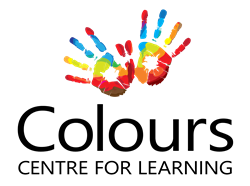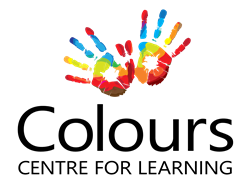What is autism?
Autism is a neurological developmental disability that hampers normal brain development, affecting communication, social interaction, cognition, and behavior.
Autism is known as a spectrum disorder because its symptoms and characteristics appear in a variety of combinations that affect children in different ways. Some children may have severe challenges and would need help while others may be able to manage their tasks independently, with less help.
Earlier, each condition (autistic disorder, pervasive developmental disorder not otherwise specified (PDD-NOS), and Asperger syndrome) was diagnosed seperately but now, these conditions are grouped together and are called as autism spectrum disorder.
Facts
- Autism is the third most common developmental disability.
- According to one of the epidemiological studies by “Action for Autism”, the prevalence rate is 1.7 million (estimated rate of 1 in 500 children in India).
- There is no cure for autism. But by little help and right environment, they can achieve great things
What are the signs of autism?
Communication:
- Have significant difficulties in forming meaningful sentences even when they have extensive vocabularies
- May repeat words or phrases they hear
- May repeat actions again and again
- May use sign language while speaking
- May or may not learn language for communication
- Inability to explain their needs, feelings and emotions
- Inability to interpret conversation, voice, facial expressions, body language
- Inability to have eye contact when someone is speaking
Social interaction:
- As infants, they may not smile or display any anticipatory posture for being picked up as an adult approaches.
- Difficulty in learning social skills or interacting with people
- May not prefer to make friends and instead plays alone.
- Avoids eye contact
- Inability to understand feelings or emotions of others around them, due to which they may not reciprocate with appropriate response.
- Trouble adapting to routine changes
- May respond differently to the way things smell, taste, look, feel, or sound
Sensory:
- Difficulty in hearing
- Sensitive to touch, sound, light, color, taste, smell
- May be sensitive to certain types of food
- May be uncomfortable with touch or physical contact
Behavior:
- Difficulty in following instructions or directions
- Shows unusual attachment to toys, objects, unusual interest in specific activities, obsessed about a specific activity
- Activities and play are generally rigid, repetitive, and monotonous
- Not afraid of real danger, but fearful of harmless objects
- Sudden mood changes: bursts of laughing or crying without obvious reason. Hyperkinesis (excessive abnormal movements due to increase in muscular activity) is a common behavior problem in a child with autism, and it may alternate with hyperactivity.
- Aggression and temper tantrum are observed, prompted mostly by change and demands.
- Short attention span, poor ability to focus on a task
- Feeding and eating problems
The exact cause for autism is still not known
What is differential diagnosis
A differential diagnosis is conducted to rule out the existence of some other disorders, including:
- Schizophrenia with childhood onset
- Congenital deafness, severe hearing disorder
- Severe mental retardation. The prime difference between autism and mental retardation is that children who are mentally retarded usually relate to adults with their mental age and use the language they do have to communicate with others.
- Psychosocial deprivation may cause children to appear apathetic, withdrawn and alienated.
A child with autism has their own strengths and talents. Parents and teachers need to focus on these positive aspects and encourage the child to make the most of it.
Strengths and abilities
We often focus on the weaknesses rather than the strengths of a person. A child with autism has certain abilities and aptitude, which parents, therapists, and teachers need to identify and encourage the child to make the most of his or her talents and skills.
The child may exhibit some of these skills:
- Good visual and spatial memory
- Methodical and organized way of doing things
- Ability to understand abstract concepts
- Excellence in the area of their interest
- Attention to detail
- Interest in languages (among children who can speak well)
What causes autism
The exact cause for autism is still not known
Getting treatment for autism
Autism is a lifelong condition and there is no cure, but the right therapy or intervention can help the child learn the necessary skills to improve the quality of their life. Since autism can be detected when the child is 18 months old or much earlier, developmental support can be provided quite early for a better outcome.
Important note to parents: As a precautionary measure, parent can request pediatricians to conduct routine developmental tests to check if the child has met developmental and language milestones.
How is autism diagnosed?
There is no single medical test for diagnosing autism but a set of specific evaluations and assessments to confirm the condition. Some of the assessments include:
- Physical and nervous system (neurological) test
- Autism Diagnostic Interview – Revised (ADI-R)
- Autism Diagnostic Observation Schedule (ADOS)
- Childhood Autism Rating Scale (CARS)
- Gilliam Autism Rating Scale
- Pervasive Developmental Disorders Screening Test
- Genetic testing to check for chromosomal abnormalities
- Tests on communication, language, speech, motor skills, academic performance and progress, cognition skills
8.Types of treatment for autism
The aim of the treatment is to target behaviors that will help the child improve their abilities to integrate into schools, develop meaningful relationships, and to increase the possibility of maintaining independent living as adults.
Treatment interventions aim to increase socially acceptable and prosocial (positive behavior intended to promote social acceptance and friendship) behavior, decrease odd behavior and improve verbal and non-verbal behavior.
Children with autism can make significant progress if the psychological intervention they receive is structured and consistent.
- Discrete Trial Training (DTT):This teaching method uses a series of trials to teach each step of a desired behavior or response. Lessons are broken down into their simplest parts and positive reinforcement is used to reward correct answers and behaviors. Incorrect answers are ignored.
- Early Intensive Behavioral Intervention (EIBI):A type of ABA for children younger than five or even three years.
- Pivotal Response Training (PRT):Aims to increase a child’s motivation to learn, monitor his own behavior, and initiate communication with others. Positive changes in these behaviors may have widespread effects on other behaviors.
- Verbal Behavior Intervention (VBI):Focuses on teaching language by breaking down each functional unit into sub units.
- Treatment and Education of Autistic and related Communication Handicapped Children Method (TEACCH):This method uses skills that the child already has to enable them to become independent. Organizing the physical environment, planning a daily routine, setting clear expectations, using visual materials to communicate are effective in helping children manage daily tasks fairly independently.
Types of therapies for autism
- Developmental, Individual Differences, Relationship-Based Approach (DIR – also called “Floortime”): Focuses on emotional and relational development (feelings, relationships with caregivers). It also focuses on how the child deals with sights, sounds, and smells.
- Occupational therapy:Teaches skills to enable the child live as independently as possible. Skills might include dressing, eating, bathing, and relating to people.
- Sensory integration therapy: Helps the child deal with sensory information like sights, sounds, and smells. Sensory integration therapy could help a child who is bothered by certain sounds or does not like to be touched.
- Speech therapy: Speech therapists work with the child and help improve communication. They use alternate methods like gestures, picture boards, etc., to help the child learn how to express his/her thoughts and ideas to others.
- Music therapy:Singing, composition, and live music making are used in this form of therapy.
- Picture Exchange Communication System (PECS):Picture symbols or cards are used to teach communication.
- Early intervention: Research shows that early intervention treatment can greatly improve a child’s development. This program can be started as soon as the child is diagnosed, even when the child is 6 months old. The intervention focuses on the core areas affected by autism – social skills, language and communication, imitation, play skills, daily living and motor skills. The program actively engages parents in the intervention, both in decision making and the delivery of treatment. Therefore, it is important to talk to your child’s doctor as soon as possible if you think your child has autism or any other developmental problem.
- Parental training:Parental programs help distraught parents who need support and counseling. Training parents in the concepts and skills of behavioral modification will help them work along with the therapists to help the child. Most importantly, the parent’s determination to help their child may result in considerable improvement in the child’s language, cognitive abilities and social behavior.
Caring for someone with autism for autism
Parents or guardians go through enormous stress and can be quite distraught when they know that their child is diagnosed with autism. Parents spend most of the time with the child as they need to take the child for treatment, therapy, counseling, intervention program, school, etc. Many parents, especially mothers leave their jobs and become full time caregivers for their child. A lot of adjustments happen at home, siblings learn to adapt their life around their special brother or sister, family members provide more support, activities and plans are made keeping the child’s interest in mind, and so on. Raising a child with autism can be challenging. However, when armed with the right knowledge, guardians can make better choices for the child.
In this situation, as a parent and caregiver, you can:
- Learn as much as possible about autism.
- Plan and provide a regular routine for all the daily activities.
- You may also need counseling to be able to cope with the situation.
- It is but natural that only parents of children with special needs can completely understand what other such parents go through. Join support groups and connect with other parents of children with autism.
- Seek professional help.
- Participate in training programs where you can learn about behavioral modification methods that you could use to help your child improve their difficulties.
- Take time for yourself, take care of your physical and emotional health.
Inclusive education
It is essential that schools, colleges, and universities provide equal opportunities and facilities for children with special needs. Despite legal provisions and government programs for children with disabilities, educational institutions prefer not to admit such children and provide additional facilities like individualized education plan, alternate methods of learning, etc.




